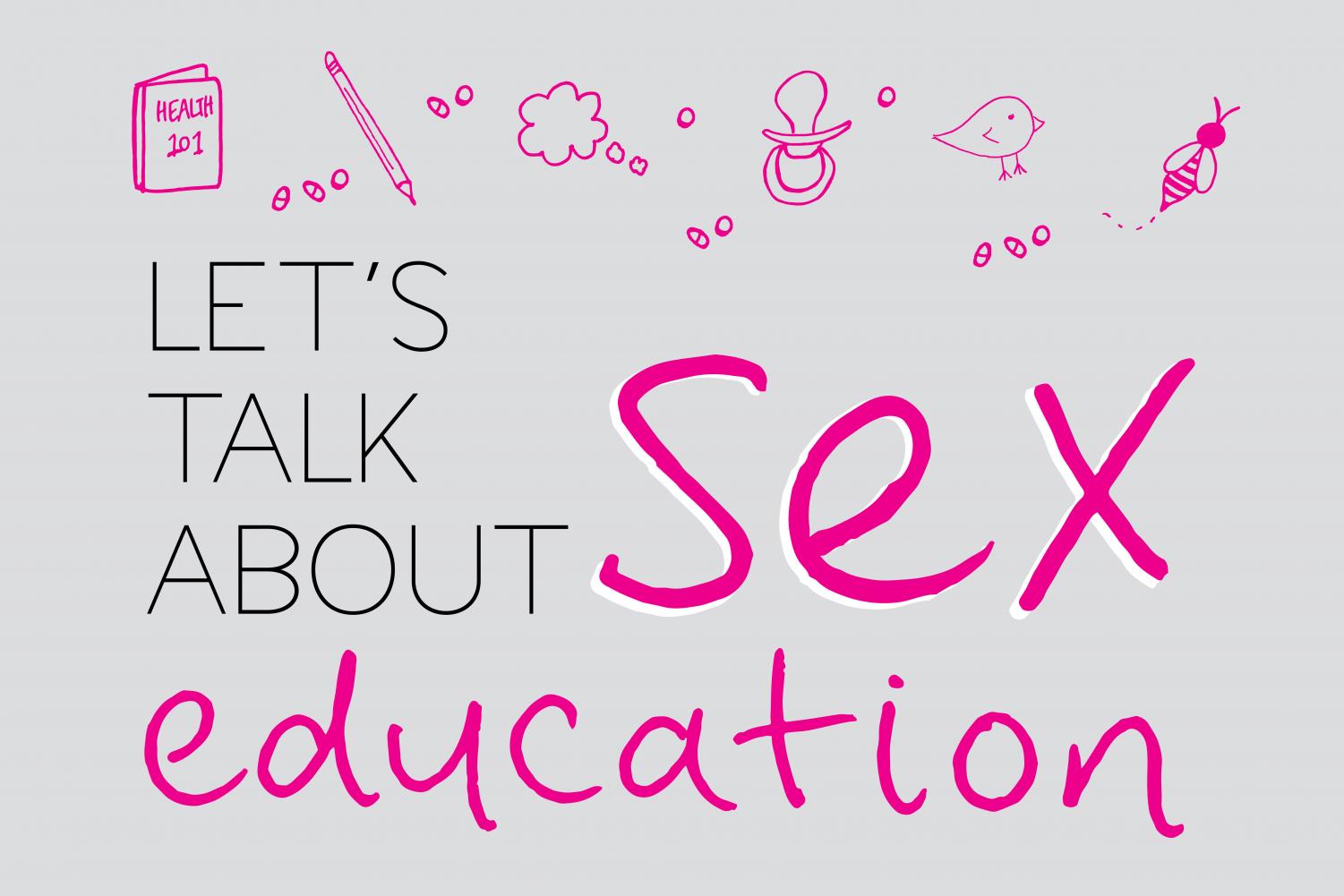Sexuality education varies amongst student body
State and district standards are designed with abstinence in mind but allow room to expand
September 20, 2018
As a freshman, you may hear or may have heard rumors about what the required semester-long sophomore Health class entails. Maybe you heard about the unit focusing on nutrition, or the different lessons about drug usage and healthy behaviors. More likely, you heard about Health as a “sex class” because, arguably, the unit focusing on sexuality education is the most notorious amongst students.
However, when it comes to sophomore year, students may find that the sexuality unit they experience varies from teacher to teacher. Some students may end up receiving knowledge about the different types of contraceptives available to them, while others may be told that abstinence is the only option to remain free of a sexually transmitted infection (STI) or an unwanted pregnancy. Even though Health classes are expected to be uniform in curriculum, there are variations in what students learn.
School
District standards give teachers control over curriculum
The contrast in classes is due to the sexuality education standards set by the state, which leaves the curriculum to the discretion of the educator, so teachers decide what aspects of sexuality education are taught. While the district gives a baseline of abstinence-only sexuality education, it also allows teachers to add additional information regarding other forms of birth control if they wish to, much like the state standards do.
For context, abstinence-only sexuality education refers to a curriculum that solely promotes abstaining from sex, while abstinence-plus education promotes abstaining from sex, but also informs students over other options such as birth control and condoms. Comprehensive curriculum does not promote any form of pregnancy prevention, but informs students of all options.
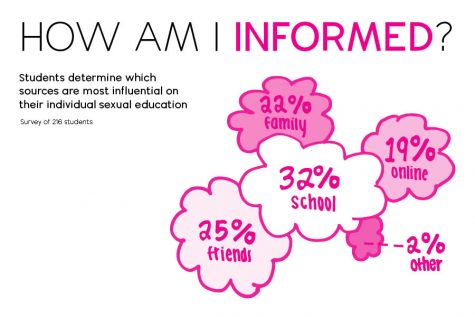 For example, abstinence-plus education is taught at the school by Health teacher Amy McClure, who includes contraceptives and birth control in her lesson plans due to her belief that such education is important for students to receive.
For example, abstinence-plus education is taught at the school by Health teacher Amy McClure, who includes contraceptives and birth control in her lesson plans due to her belief that such education is important for students to receive.
“The sophomore Health education that a student gets could potentially be the last class that a student gets in their educational career pertaining to their own personal health,” McClure said. “In a way, that frightens me, because you are 15 or 16 years old and these are skills that you’re going to use for a lifetime.”
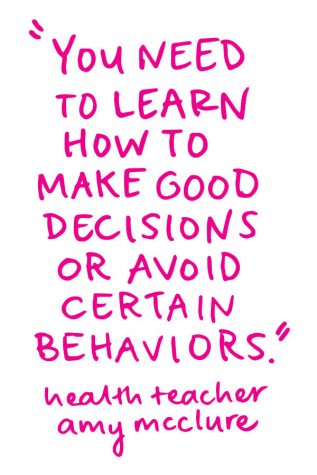
On the other hand, Health teacher Sarah Haub believes that discussions regarding forms of birth control are inherently personal and need to be left to students and their families to discuss, so her lesson plans reflect an abstinence-only education.
“I feel like I might be overstepping the parents’ view in what they want their child to learn, so I try to make it to where [kids] can have conversations at home with their parents and can make decisions off of what their parents value and what they value and they can come up with what they believe together,” Haub said. “I believe that some of the stuff that we teach has to do with your family and your family culture.”
Additionally, Haub feels that regardless of what students’ values are, birth control is ultimately a personal choice that students need to make with their family, not the school.
“I feel like that’s a personal choice and a parental guiding choice. It’s not a discussion I should be leading with these kids. It doesn’t affect me; it affects your parents, siblings and other family members. It’s a family matter,” Haub said. “Although, if you’re not getting that information at home you can ask me about it and I’ll give it to you.”
As to the reasoning behind the design of the standards, Dr. Joe Kelly, Director of Curriculum and Instruction, attributes the vagueness of the district standards to being designed in a way that allows teachers to have control over what they teach, but lets students receive similar knowledge regardless of who is teaching them.
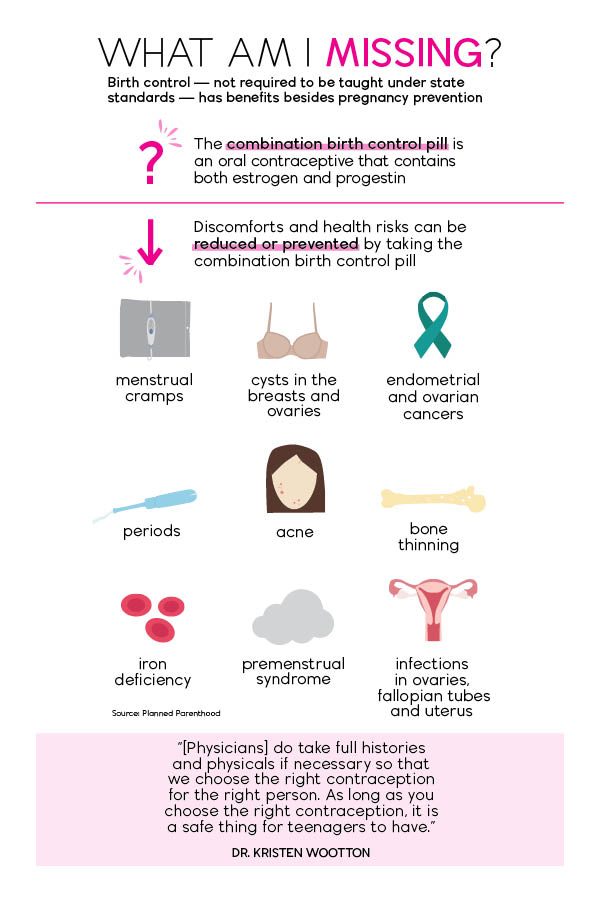 “We want to have a base resource, but we treat [teachers] as professionals, so they can bring in other things to help them teach health class. We usually like them to discuss that and make sure that they get input from everyone,” Kelly said. “Our perspective is that there is a spectrum of risk, and we are committed to teaching students about the safest way to approach those types of situations … there is a spectrum of risk involved in human sexuality and the safest route is abstinence.”
“We want to have a base resource, but we treat [teachers] as professionals, so they can bring in other things to help them teach health class. We usually like them to discuss that and make sure that they get input from everyone,” Kelly said. “Our perspective is that there is a spectrum of risk, and we are committed to teaching students about the safest way to approach those types of situations … there is a spectrum of risk involved in human sexuality and the safest route is abstinence.”
While abstinence may be seen as the best option for educators to promote, Dr. Kristen Wootton, gynecologist and mother of two students at the school, believes a comprehensive sexuality education is best and should include everything ranging from different types of intercourse to options regarding contraceptives.
“Most of us assume that everybody knows the basics, but you’d be surprised how many people that show up on my doorstep that I’m showing anatomy to even though they’re 27 years old,” Wootton said. “I think you need to talk about all types of sex … [because] if you don’t, people have misconceptions about what is normal or not normal and what consequences can happen from any of those actions. Students need an open forum where they can ask any question that they want to ask and have it be answered in a safe and protected environment where they’re not made to feel like they shouldn’t ask.”
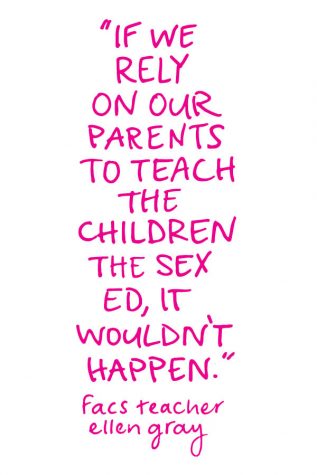
Similarly, junior Griffin Schenk would like to see a wider focus in regards to human sexuality than that currently offered by the curriculum.
“I think we should have more realistic expectations [with] the social environment, because that’s always changing,” Schenk said. “Abstinence isn’t always a realistic thing for everybody, so I think … it should still be presented as an option, but I think the more safe-sex approach is going to be much more effective.”
However, if students do want to receive more in-depth knowledge, supplemental elective classes such as Human Growth and Development and Family Studies also explore topics related to sexuality. The curriculum for these classes is allowed to be more thorough regarding safe sex and contraceptive options because students must choose to participate in these classes. Family and Consumer Sciences teacher Ellee Gray believes that such discussions are necessary because they may not occur at home.
“If we just rely on our parents to teach the children the sex ed, it wouldn’t happen. When I ask my students how many of their parents have talked to them, I probably have a handful of students out of 28 who will raise their hands,” Gray said. “So we have about three-fourths of our high school population whose parents have not said anything to them about sex education.”
Ultimately, Kelly believes that all lessons in Health class are aimed at preparing students to make safe choices after they transition from high school into living independently.
“It’s all about teaching healthy behaviors and that’s what we are committed to,” Kelly said. “It is a part of growing up and teaching kids about themselves and their relation with the world. The more that we prepare them, the better.”
State
As standards come under review, community members express opinions on curriculum
The standards that the state provides act similarly to those from USD232, largely acting as recommendations for educators. In effect, the state has decided that “local school control determines content and extent of human sexuality education,” according to the Kansas Department of Education’s website. So, what is taught in a classroom can vary all across the state.
However, the standards do request that students “demonstrate an in-depth, extensive knowledge of the importance and benefits of abstinent behavior and risk-reducing strategies in the areas of substance use and sexuality.” These standards have not been updated since 2007 and are currently being revised to include more updated focuses for curriculum content by the Kansas Health Standards Revision Committee, for which McClure is the chairperson.
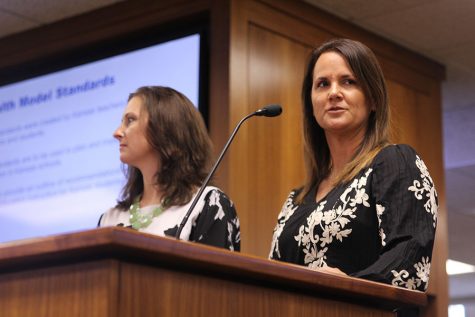
Speaking to the Kansas Board of Education on Tuesday Sept. 11, Health teacher Amy McClure proposes an updated version of the state-wide health education curriculum.
The committee focused on updating said standards to add newer areas of focus, such as prescription drug usage. McClure presented before the state Board of Education on Tuesday, Sept. 11 on the behalf of the committee. However, the sexuality unit may end up fairly unchanged.
“We just wanted to outline recommendations for quality Health education,” McClure said. “It’s not what we necessarily felt needed to be taught, but it was more ‘here are the standards and the things we feel are important, and here are some things to make sure you think about covering in your health class. The changes that were made were pretty minimal. We really just wanted them to be updated with the highest quality information available.”
The proposed revisions pull from state and national standards and Social, Emotional, and Character Development (SECD) standards, according to McClure, to provide a more well-rounded focus for sexuality education.
A change that senior Liz Fraka would like to see made to the content of sexuality education classes is more focus on consent and sexual orientation than what is currently provided.
“Consent is the most important thing and it should be from a young age, even before kids start talking about sex,” Fraka said. “What I want from a better sex ed program is knowledge of contraceptives, increased emphasis on consent and an emphasis on science. [Also,] you should include sexual orientation and gender identity in sexuality education.”
In addition, Wootton believes the job of informing students doesn’t solely fall on public educators. She says it is important for parents to have conversations with their kids regardless of how awkward such topics may feel and to keep an open dialogue.
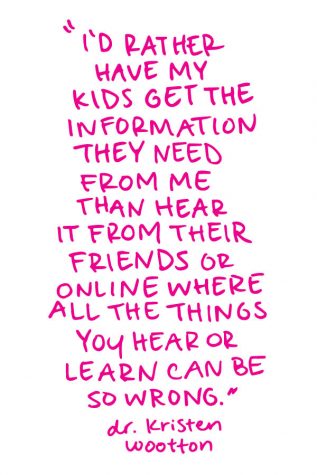
“The way I view it as a mom is that I’d rather have my kids get the information they need from me than hear it from their friends or online where all the things you hear or learn can be so wrong,” Wootton said. “Maybe you don’t want your kids to know that, but they’re going to learn it anyway and there’s no better place to find it than in an education setting where you know they’re going to get accurate information that they can use lifelong.”
On the other hand, Wootton believes students need to take initiative by asking their parents questions or inquiring about any birth control they’re interested in.
“Have the conversation regardless of how uncomfortable you are. Even though you may receive a little backlash or a little disappointment, eventually, most parents will feel like they’re glad that you came and talked to them,” Wootton said. “In the long run, I think everybody will do much better if you have those discussions.”
Like Wootton recommends, senior Caroline Rutledge keeps an open dialogue with her family and turns to other adults whenever she needs to.
“I talk to my mom openly if I need to and obviously I can go to my teachers too,” Rutledge said. “They all have, especially the family studies teachers, a lot of information.”
The benefits of keeping an open dialogue with students can be measured in the rate of teenage pregnancies, according to nurse practitioner Karla Robinson, who formerly ran a women’s health clinic.
“The age group with more unplanned pregnancies is not teenagers anymore,” Robinson said. “We’re actually doing a better job because we encourage younger ladies to use contraception.”
However, if students are absolutely unable to talk to their parents, Wootton hopes they turn to another adult.
“If you cannot talk to your parents for whatever reason it is, talk to another adult that you trust,” Wootton said. “I would rather you talk to somebody and get assistance that way than just not do anything.”
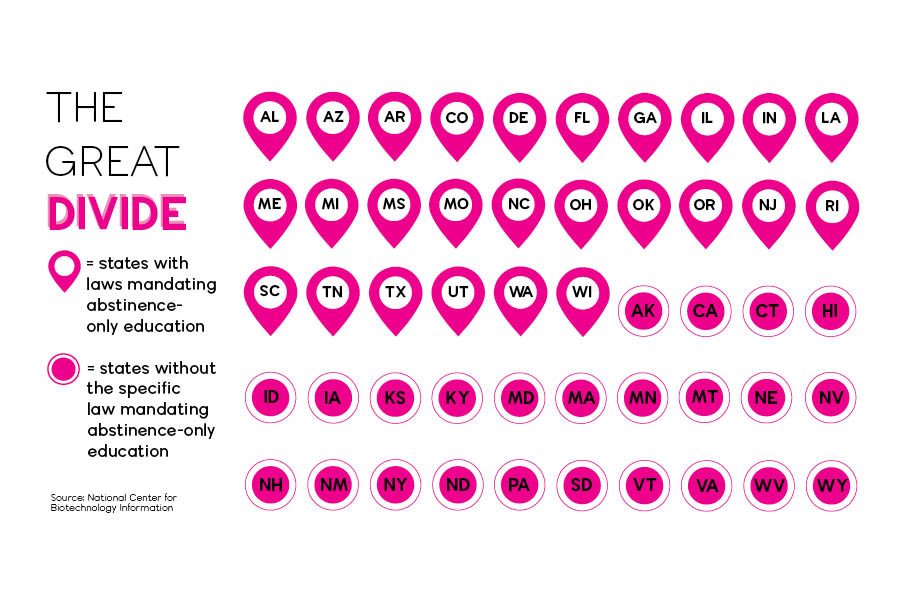
Likewise, Gray hopes that for those students, she is a trustworthy and comfortable source of information.
“It’s always best to ask a trusted adult that will be honest with you about your questions,” Gray said. “I try to do that in my classes.”
Regardless of what is accessible to students in the classroom, McClure believes that sexuality education is a necessary component to students’ health and personal lives.
“[Safe sex] is very practical information that I feel like everyone needs to know, but a lot of teachers and parents are scared to teach,” McClure said. “I want kids to understand that there are certain things in your life that may or may not affect you, but you at least need to be aware of them and you need to learn how to make good decisions or avoid certain behaviors in order to reach those goals pertaining to your health.”
Correction: This story was updated on Thursday, Sept. 20 to change “sexual education” to “sexuality education.” The second term is used by the state Board of Education in the standards for health and sexuality curriculum.
This story was also updated to correct Dr. Joe Kelly’s title. He is the Director of Curriculum and Instruction.
